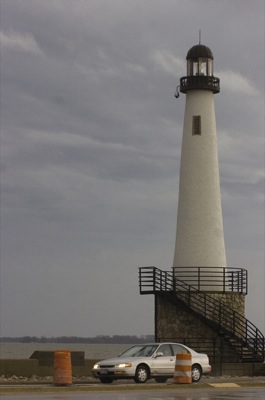Monday, April 4th, 2011
Second alum study to begin
By Nancy Allen
GRAND LAKE - The state is on schedule to start a second alum study Tuesday at three sites on Gand Lake, weather permitting, said Brian Miller, interim manager at Grand Lake St. Marys State Park.
The results of the study will be used to conduct future alum treatments on the 13,500-acre lake, which was nearly shut down last summer due to massive toxic blue-green algae blooms. Alum robs the algae of its main food source, phosphorous.
The test sites have been cordoned off with curtains and will be closed to boat traffic during the alum application and test. Sites will be monitored for 30 days after treatment.
The locations include the Kozy Marina channel, which will receive granule alum on Tuesday; the state park campground lagoon, which will receive a pretreatment of hydrogen peroxide on Wednesday and liquid alum on Thursday; and the Windy Point east channel, which will receive a heavier dose of liquid alum on Friday.
"Some of you probably went to put your boat in a Windy Point boat ramp and couldn't get in," Miller said during Saturday's Lake Improvement Association (LIA) meeting. "You can still fish the treatment areas from the banks, and there's other boat ramps around the lake to use to put your boats in."
Nebraska-based company HAB Solutions will do the state-funded test.
Miller said a $5 million large-scale alum treatment of Grand Lake is expected to start May 16 and be completed by July 1. The alum distributed will represent about 18 percent of the amount needed for a whole-lake treatment, he said.
A whole-lake treatment is not being done due to limited funding. The state is planning to pay for the May treatment through an Ohio EPA Water Pollution Control Loan Fund that won't be repaid.
A higher dosage of alum will be applied in the middle of the lake to attack phosphorous in the sediment. A lower dosage will be applied around the entire shoreline to attack phosphorous suspended in the water column.
The middle portion also will be pretreated with hydrogen peroxide, which strips phosphorous from organic matter, sediment and algae, said ODNR spokesman Scott Fletcher. This allows the phosphorous to bind to the alum.
Ongoing, small-dosed alum treatments will be needed in the lake for some years until conservation fixes on the land start reducing phosphorous runoff, said Russ Gibbons, a consultant hired by the state. Alum is being used as a short-term solution.
Gibbons works for Tetra Tech, the firm the state hired to conduct alum tests in the lake last summer. Those tests produced phosphorous reductions, but not as much as the state had expected.
LIA members on Saturday also heard a presentation by Daman Ansted of Kapex, a Troy, Mich.-based company with a sales office in Columbus. The business distributes and installs Jet Streamer and Algae Hunter units.
The Jet Streamer, which sits on an anchored pontoon boat, creates a waterfall that makes a gentle current in the water. The current creates micron-sized bubblesw that help suppress phosphorous, nitrogen and heavy metals and decompose organic matter in the sludge, Ansted said. Ozone, which boosts the usefulness of the oxygen and is considered seven times more effective than chlorine, is added to the flow to help clean the water.
The solar-run Algae Hunter bursts vacuoles in the algae, which cause it to sink to the bottom where it can be broken down and decomposed by beneficial bacteria in the oxygenated water. The units also are placed on pontoons.
"Eighty percent of the problem in this lake is stagnancy. The water doesn't move much at all," Ansted said. "If you had moving water, a lot of these problems would go away."
Ansted said 65 percent of the blue-green algae sinks to the bottom after one pass through of the Algae Hunter.
"Within two years of running in your lake, this system will decompose 75 percent of the organic matter in the bottom of the lake," he said.
To do that in that amount of time would take 30 Jet Streamers and 15 Algae Hunters.
The cost of all 45 devices, installed and shipped, is estimated at $18 million, Ansted said. They would cost about $120,000 a year to operate and less than $100,000 in labor over 10 years. Pumps need replaced every five years at $65,000 each.
Ansted said a smaller number of the units could be installed in specific areas, and community volunteers could help with maintenance to save costs.


